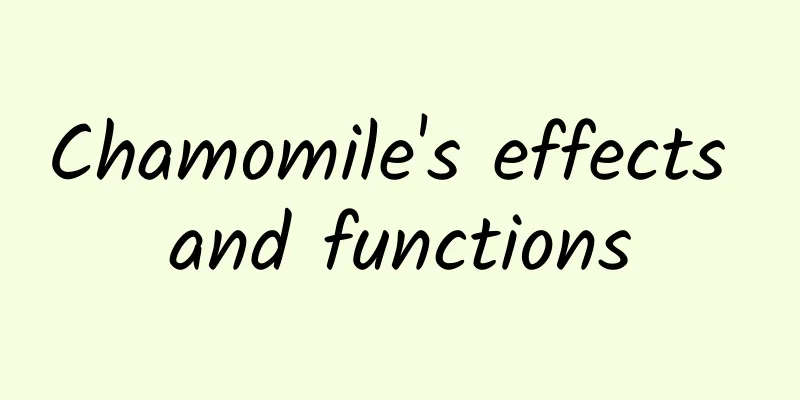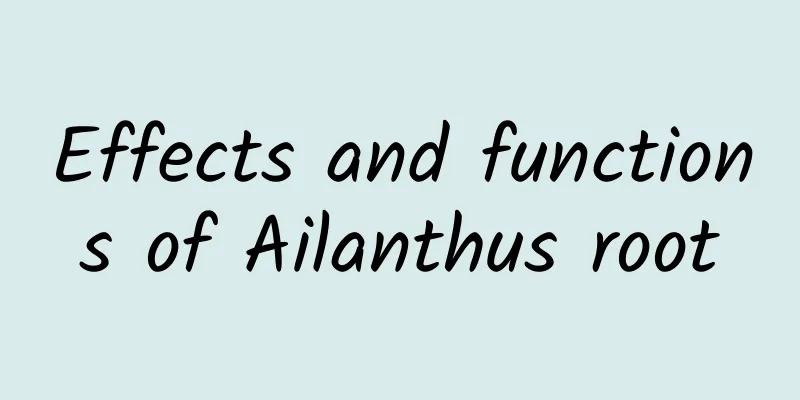What does wild wormwood look like?

|
Other names of mugwort: Xiaomao, Bingtai, fragrant mugwort, Qi Ai, Aixiao, mugwort, mugwort, moxibustion grass, medical grass, yellow grass, mugwort wool, etc. So what do the natural mugwort and red-footed mugwort in the countryside look like? Mugwort has so many main uses! What do wild wormwood leaves look like? Artemisia annua is a perennial herb or slightly semi-shrubby green plant with a strong fragrance on its main stem. 1. What does mugwort look like? The main stem is prominent, slightly thick and long, with a diameter of up to 1.5 cm, and many main roots; horizontal rhizomes and nutrient branches often appear underground. Stem single or very few, 80-150 (-250) cm high, with obvious longitudinal ridges, dark brown or gray-brown, slightly woody at the tip, herbaceous at the top, and with very few short branches, 3-5 cm long; stems and branches are covered with dark gray spider-like soft hairs. Red-footed mugwort is known as the legendary "divine mugwort". Both pictures on the left and right are of red-footed mugwort. 2. The efficacy and function of mugwort 1. Nutritional components of Artemisia argyi Modern pharmacology has found that the volatile oil of wormwood leaves contains many components, including 1.8-cineole (accounting for more than 50%), as well as α-thuja ketone, sesquiterpene alcohols and esters. The dried leaves contain 10.13% minerals, 2.59% fat, 25.85% protein, as well as vitamins A, B1, B2, C and so on. For moxibustion, generally speaking, the older the mugwort leaves are, the better. Hence, there is a saying that “a seven-year illness requires three years of treatment with mugwort” (Mencius). The effects of Artemisia argyi and Poria cocos are bitter, pungent and warm, and they enter the spleen, liver and kidneys. "Compendium of Materia Medica" records: Mugwort leaves are used as medicine, which are warm in nature, slightly bitter in taste, non-toxic, purely yang in nature, and can pass through the twelve meridians. They have the functions of restoring yang, regulating blood and qi, expelling cold and dampness, and promoting blood circulation and nourishing the fetus. They are also commonly seen in traditional Chinese medicine and acupuncture. Therefore, it is also called "medicinal herb". Most of the "herbal baths" that are popular in Taiwan, China, use mugwort. (II) The efficacy of mugwort Artemisia annua is bitter, dry and pungent in nature. It can regulate blood and qi, warm the meridians, expel dampness and cold, and relieve cold pain. It is an important medicine for gynecology. It is used to treat cold pain in the abdomen, menstrual disorders due to cold, infertility due to cold uterus, etc., such as Ai Fu Nuan Gong Pills. Stir-fried charcoal can invigorate blood circulation and can be used to treat menorrhagia due to yin deficiency and internal heat, metrorrhagia, leukorrhea, and fetal bleeding during pregnancy, such as Jiao Ai Decoction. This product can be pounded into moxa patches and moxa sticks. External moxibustion can dispel cold, relieve pain, and warm the blood. The decoction can be used for external washing to treat eczema, scabies, and tinea, and to remove dampness and relieve itching. Regarding the characteristics of mugwort leaves, "Compendium of Materia Medica" records: "Mugwort leaves can cure all diseases." "Compendium of Materia Medica Congxin" says: "Mugwort leaves are bitter and pungent, warm when raw, hot when cooked, and purely yang in nature. They can restore the lost yang, connect the twelve meridians, run through the three yin meridians, regulate blood and qi, expel dampness and cold, warm the uterus... Using it for moxibustion can penetrate all meridians and cure all diseases." This shows that using mugwort leaves as the raw material for moxibustion has the effects of relaxing muscles and activating blood circulation, removing yin, reducing swelling and knots, and restoring yang and rescuing from adverse conditions. (III) The role of mugwort The use of wormwood leaves to prevent plague has a history of thousands of years. Chinese herbal medicine can be adapted to local conditions, and modern scientific pharmacology research has shown that wormwood leaves are a broad-spectrum antibacterial and antiviral drug. It has inhibitory and destructive effects on many viruses and bacteria, and has a certain preventive effect on respiratory diseases. The fumigation method with mugwort leaves is a simple and easy method of epidemic prevention. Artemisia annua, also known as Artemisia argyi and Artemisia argyi. Its stems and leaves contain volatile aromatic oils, which create a unique fragrance that can repel mosquitoes, insects and ants and purify indoor air. Traditional Chinese medicine often uses moxa as a medicine, which is said to have the effects of regulating blood and qi, warming the uterus, and removing dampness and cold. In acupuncture, moxibustion therapy is to put "moxa" made from mugwort leaves on the acupuncture points for burning to treat diseases. |
<<: Alfalfa's efficacy and effects
Recommend
The efficacy and function of multi-flowered octagonal lotus
The multi-flowered octagonal lotus is a very fami...
Was Musk's Starship's first flight a success or a failure?
Recently, SpaceX conducted another launch test. O...
40℃ high temperature is coming! You need to know these fire prevention measures!
The Central Meteorological Observatory warns that...
What are the functions of vitamin B complex
The human body needs many nutrients, and it also ...
If a nuclear bomb were dropped on the Yellowstone volcano, would it cause a huge disaster?
Yellowstone is a supervolcano located in Yellowst...
Hong Kong regulates disposable tableware, and biodegradable plastics cannot escape being "banned". Why?
Every year, countless waste plastics drift into t...
What are the medicinal values of Sophora japonica?
We all know that there are many categories of Chi...
Kou Chang Bai Du Capsule
There are many types of medicines, and you cannot...
What are the effects and functions of the black-necked snake?
Snakes are animals that most people are afraid of...
There is a group of elves with long necks and tails, and different postures. They are...
On the second floor of the Ancient Ocean Exhibiti...
Liu Hao | Let there be no more difficult surgeries in the world
"Robots have largely liberated people's ...
The efficacy and function of fine vine
Do you know what Xiluzivine is? It is a kind of t...
Railways, a genius system
Editor's note: The history of railway develop...
The efficacy and function of iron powder
There are so many medicinal herbs in the world, a...
Nikkei: COVID-19 changes online sales in Japan
While many businesses have been impacted by the n...









